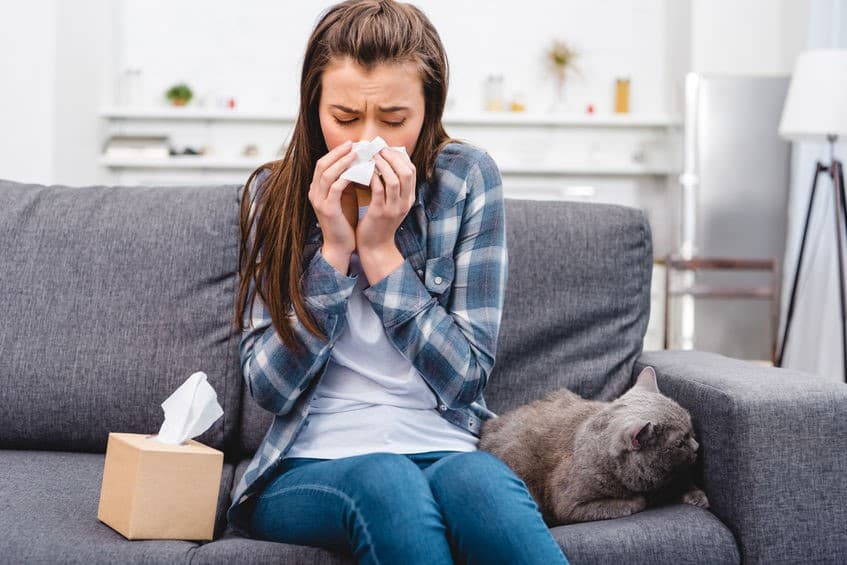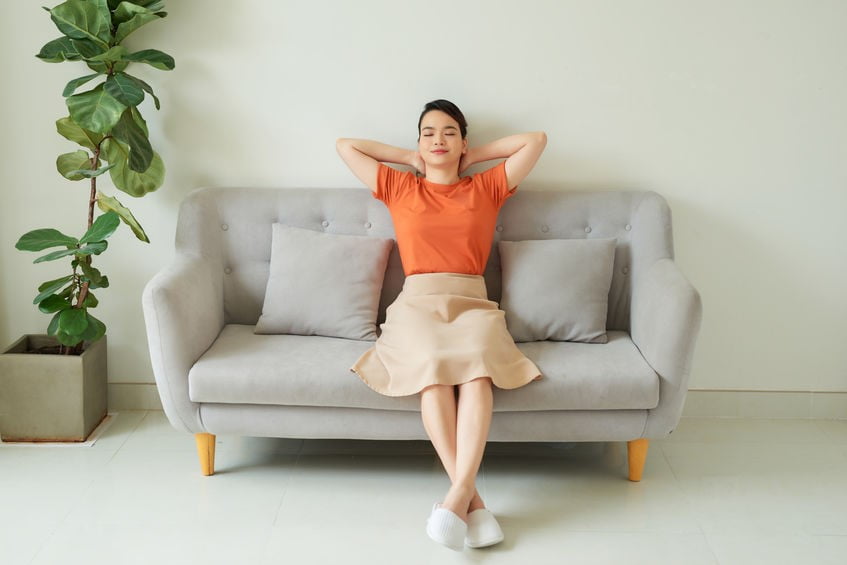Felines are friends to so many of us. Sometimes, they're considered friends to a few in a household, but not to others. Either way, cats can cause pet allergy flare ups for many humans. Whether you're in the "friend to felines" or "tolerating felines" category, Air Health would like to help you with some solutions for reducing pet allergies from your favorite feline.
Cat allergies or pet allergies in general result from dander, a collection of lightweight particles made up of skin, fur and saliva that can stay on surfaces and in the air for hours. It can also land and stay on furniture, carpet, mattresses, upholstery and clothing. What's more, cat dander is said to contain the smallest particles, so they stay in the air longer than the dander of a dog, for example.
Allergic reactions to cats can range from sneezing and runny noses to difficulty breathing, and even other symptoms like facial pressure and pain or skin rashes. While the best way to avoid these reactions is not to have cats in your home, we understand that sometimes the love of a particular cat, or a loved one's love of that cat, can outweigh the need to deal with pet allergic reactions.

Here are some ideas for lessening pet allergy reactions in your home:
- Allergy medications or shots. See your physician about using nasal sprays, antihistamines and bronchodilators to help relieve symptoms. You might also ask them about immunotherapy, which injects a small amount of the pet allergy into the body to help build up resistance.
- Restriction to certain rooms. Sometimes, the best solution is to keep the cat in a certain area of the house, or avoid letting the cat in the bedroom. This works especially well if the person with pet allergies is not likely to touch or pet the cat. It's also a fine solution when there's a house boarder who keeps to certain rooms in the house.
- High-efficiency vacuuming. Using a powerful carpet and upholstery vacuum or a central household vacuum can help reduce the amount of dander in the air.
- High-efficiency particulate air filters. High efficiency particular air filters, also known as HEPA air filters, are mechanical filters designed to remove 99.97% of dust, pollen, mold and other particles 0.3 microns in size. A high quality portable air purifier is designed with medical-grade filtration, meaning it meets the requirement for removing 99.97 of particles as small as 0.3 microns. Designed with patented PRO-cell technology that breaks down VOCs, or volatile organic compounds and toxic gases, SKYE cleans 420 cubic feet per minute. It's not only effective at reducing allergy causing pet dander particles, but it's also equipped with ultraviolet technology that neutralizes airborne viruses, germs and mold. It's also WIFI-compatible and automatically adjusts to the air in the room with particulate and VOC sensors.

Please feel free to contact Air+Health anytime with questions about reducing pet allergens in your home or about SKYE, our top-of-the-line portable air purifier, or our line of in-duct air purifiers, which harness the power of ultraviolet light to control airborne viruses, bacteria and particles.
Allergy Insider: https://www.thermofisher.com/diagnostic-education/patient/us/en/blog/pet-allergy-symptoms.html
ACAAI: https://acaai.org/allergies/types/pet-allergy
U.S. EPA: https://www.epa.gov/indoor-air-quality-iaq/what-hepa-filter-1
 US Dollars
US Dollars
